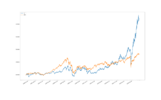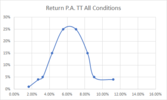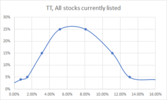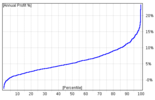Now, I am not familiar with this particular data source, but if it adjusts for splits and dividends, why not use an index based ETF as your benchmark?Data: using yahoo finance. This gives you adjusted OHLC which accounts for all splits and dividends. However, if I use this, it is a little hard to compare to XAO unless I can easily split out the dividend yield.
There are a number of ASX listed ETFs which aim to mimic XJO or XAO. Just choose one of those, and let your data source adjust prices for any dividends or distributions that they pay. Easy.
KH








